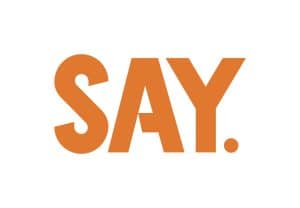Stick or twist? Looking at the patient experience as we emerge from the COVID pandemic
June 28, 2021 | Covd-19, patient engagement, patient experience
The pandemic has given us a glimpse (actually, more of a very long look) at an alternative way of receiving healthcare and engaging with the NHS. And that alternative fits in with 21st century life in a much better way for many of us. So are these changes here to stay?
A new patient experience
The past year has seen health services rapidly adapt to the pandemic on a scale and at a pace we wouldn’t have thought possible pre-COVID.
Driven by the urgent need to reduce face-to-face contact and manage demand, we’ve seen a significant change in the way healthcare is being delivered and in how patients are engaging with the system.
This has included more phone and video consultations in both primary and secondary care, an increased use of email and text for communicating with HCPs, greater use of the electronic prescribing service, more use of the NHS website and 111 online, and increased focus on devices and apps.
No doubt we have all been personally affected in some way. For me, a routine process of booking a GP appointment and picking up medication took just a few days – whereas previously that might have taken a couple of weeks. The ten-minute phone consultation was easier to fit into my working day, I was able to send additional information to my doctor over email and my prescription was quickly emailed to my local pharmacy.
Some technologies existed before COVID struck, but many are new. For me, the process from start to finish was significantly easier – I was a very satisfied customer.
It seems I’m not the only one feeling this way.
According to YouGov research carried out in October 2020 by The Health Foundation, nearly all adults (97%) said they had used technology to either receive NHS care or communicate with NHS staff. For 40% of this group, this use of technology was in a new way or for the first time. And for the majority the experience seems like a good one: 83% of UK adults who reported increased use of technology said their experience was a positive one, with 78% of NHS staff agreeing.
We asked our followers which routes of ‘virtual’ patient engagement they wanted to remain in place as we emerge from the restrictions. 70% of survey participants agreed they wanted online GP consultations to continue, with 20% wanting online hospital appointments to remain as a matter of course.
Of course, there’s a huge watch out. For many, including those who don’t have access to technology or those from older age groups, these digital routes aren’t necessarily a viable option. With a more remote approach to consultations, are GPs missing a valuable opportunity to spot other symptoms? And are patients less likely to come forward with concerns, therefore missing opportunities to refer and diagnose health conditions at an earlier stage?
Changing treatment landscape
COVID isn’t just changing the way the NHS talks and communicates with the public at scale; it’s also accelerating a healthcare trend that was already in place.
Remote patient monitoring (RPM) is not new. RPM technologies, including wearable sensors, gather data automatically. Others such as smartphone apps and at-home devices require manual input of health information. But what all RPM tools have in common is that they enable patients to self-manage their condition away from healthcare settings, and with that comes well-documented benefits for both HCPs and patients.
With better access to health data, HCPs can monitor patients from afar – reducing pressure on the system and leading to more timely detection if someone’s condition is deteriorating. Effective flow of data from RPM to patient records also has obvious advantages.
For patients, particularly those with long-term health conditions it can be game-changing. They can maintain their independence and have more control over treatment. Not to mention a reduction in personal costs and time needed for hospital visits.
Our followers seem bought into these benefits too. When asked about the most significant benefit that remote patient monitoring offers, they overwhelmingly highlighted quality of life and reducing the numbers of hospital visits in terms of where we had most to gain, with 84% of survey participants citing these benefits.
But again, there’s a watch out. It can never be the only route – everyone’s case is unique and must be assessed on its own merits. But eyes have been opened (at scale) to a new way of doing things, and that’s a huge step forward.
A more digitally-enabled future?
While implementing new technologies obviously comes with huge challenge, COVID has provided us with an opportunity to press the re-set button. And it seems this change – a change that once seemed vast and impossible to deliver at scale and at pace – is in fact achievable.
With a huge backlog in treatment now faced by the NHS and HCPs, do we have much choice in anything but keeping going along this path?
This content was provided by Say Communications





